30 found, showing page 2 of 2
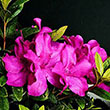
Reblooming Azalea with single purple flowers that appear in spring, then rebloom in summer until hard frost. Expect masses of late summer and fall flowers even in high summer temperatures. Matures at 1.5 to 2 feet tall and 2.5 to 3 feet wide.
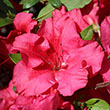
This reblooming variety produces masses of red, double flowers in spring. Masses of flowers also appear in late summer and fall. Grows 2-3' tall and 3-4' wide.
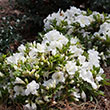
A reblooming Azalea with masses of large, single white flowers in spring, some sporadic summer flowers, and then masses of late summer and fall flowers. Grows 2.5 to 3 feet tall and 3 to 4 feet wide. Will brighten your landscape.
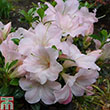
Sir Robert' produces large, pale-pink flowers in late spring. Keeps a compact habit, reaching 2-3' tall and 3-4' wide.

The 'Tradition' azalea is a heavy bloomer that produces deep-pink flowers. Keeps a low, spreading habit, reaching 2-3' tall and 3-4' wide.
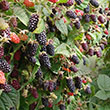
The 'Marionberry' is a hybrid that produces sweet-tart berries that are high in antioxidants. Fruit is great for pies, jams, jellies and syrups, and crop will ripen late-June into early-July. This plant has a trailing growth habit and will reach a mature size of 5-6' tall and 2-3' wide.
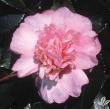
The 'Winter's Interlude' produces light pink, semi-double blooms that can last anywhere from 4 to 6 weeks from November through December. This variety has an upright, spreading habit and will grow 6-8' tall and 4-5' wide.
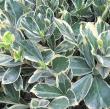
The 'Silver King' boasts glossy green leaves with creamy-white margins. It is an upright, evergreen shrub that matures at 6' tall by 3' wide. Tolerates poor soils and heat.

The 'Red Fame' is a low-growing, upright variety that will get 2-3' tall and wide. It will produce large clusters of star-shaped, yellow flowers in mid-summer that will persist into early fall. Bright red berries appear in fall after blooms are spent, and the dark green leaves can persist into winter.

This low growing, dense variety is wider than it is tall, reaching 2-3' tall and 3-4' wide. Dark green foliage is long and flat. Great for shrub borders or low hedging.

This juniper will reach a height of 1 foot and spread of 6-8'. It has a trailing growth habit with beautiful blue-green foliage. Makes a great groundcover.
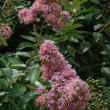
Height: 20 feet
Spread: 15 feet
Sunlight: full sun, partial shade
Hardiness Zone: 6b
Other Names: Crape Myrtle, Crepe Myrtle
Description:
This attractive ornamental shrub or small tree produces volumes of light lavender-pink frilly blooms in summer, followed by vibrant red fall foliage; captivating focal point for the garden or border
Ornamental Features:
Muskogee Crape Myrtle is covered in stunning panicles of lavender frilly flowers with pink overtones at the ends of the branches from early to late summer. It has attractive dark green deciduous foliage which emerges coppery-bronze in spring. The oval leaves are highly ornamental and turn red in fall.
Landscape Attributes:
Muskogee Crape Myrtle is a dense multi-stemmed deciduous tree with a more or less rounded form. Its relatively fine texture sets it apart from other landscape plants with less refined foliage.
This is a relatively low maintenance tree, and is best pruned in late winter once the threat of extreme cold has passed. It has no significant negative characteristics.
Muskogee Crape Myrtle is recommended for the following landscape applications:
- Accent
- Mass Planting
- Hedges/Screening
- General Garden Use
Planting & Growing:
Muskogee Crape Myrtle will grow to be about 20 feet tall at maturity, with a spread of 15 feet. It has a low canopy with a typical clearance of 3 feet from the ground, and is suitable for planting under power lines. It grows at a fast rate, and under ideal conditions can be expected to live for approximately 20 years.
This tree does best in full sun to partial shade. It prefers to grow in average to moist conditions, and shouldn't be allowed to dry out. It is very fussy about its soil conditions and must have rich, acidic soils to ensure success, and is subject to chlorosis (yellowing) of the foliage in alkaline soils. It is highly tolerant of urban pollution and will even thrive in inner city environments. This particular variety is an interspecific hybrid.
30 found, showing page 2 of 2